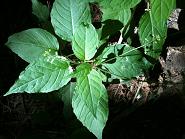
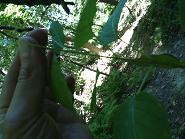

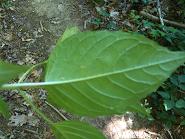

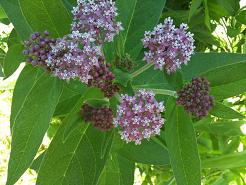
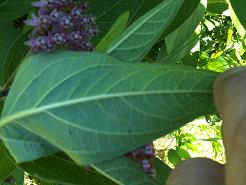
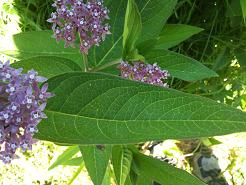


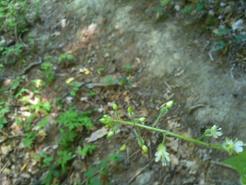


|

|

|

|




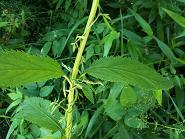
|

|
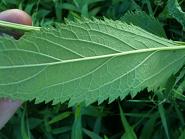
|
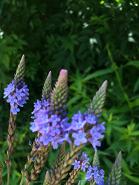
|
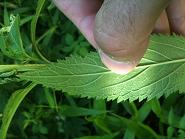
|

|

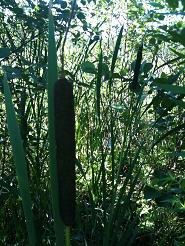
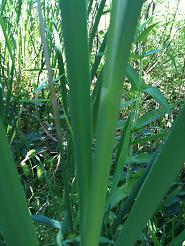
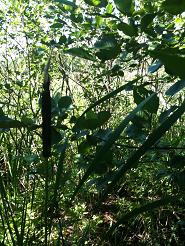

|

|

|

|
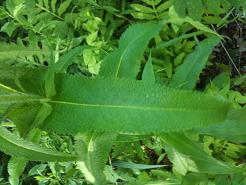


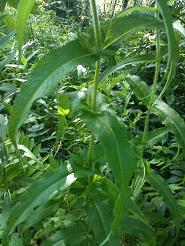

|
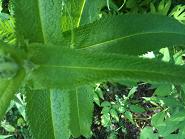
|

|

|
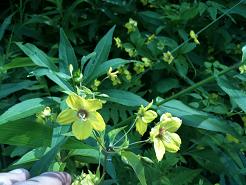
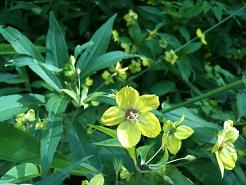

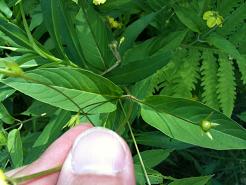
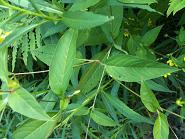
|
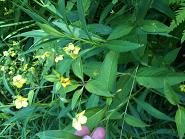
|
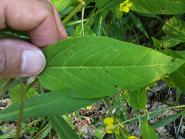
|

|

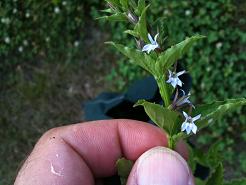 The tiny violet Lobelia flower reminds me of the small Canada Toadflax
(Linaria canadensis) flower, but the full large leaves make the plant
look completely different. I did not realize that this is the herb, Lobelia,
as my guidebooks mostly had it listed as Indian Tobacco.
The tiny violet Lobelia flower reminds me of the small Canada Toadflax
(Linaria canadensis) flower, but the full large leaves make the plant
look completely different. I did not realize that this is the herb, Lobelia,
as my guidebooks mostly had it listed as Indian Tobacco.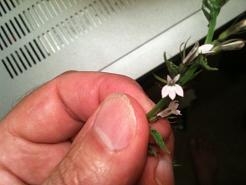
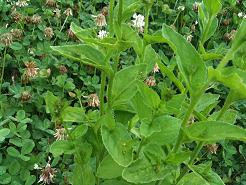 The whole above-ground portion of Lobelia is used by herbalists in infusion, tincture,
or oil/linament form. When taken internally, it is very powerful, so very small amounts
are used. In very small amounts, it helps relax the body, but in even moderate amounts
it can cause a person to throw up (and was sometimes used for this to clear the stomach).
Internally, it helps heal the nervous system and clears obstructions in the body. Externally,
it is used to treat inflammation. More detail on the safe and appropriate use of Lobelia
can be found in the following books:
The whole above-ground portion of Lobelia is used by herbalists in infusion, tincture,
or oil/linament form. When taken internally, it is very powerful, so very small amounts
are used. In very small amounts, it helps relax the body, but in even moderate amounts
it can cause a person to throw up (and was sometimes used for this to clear the stomach).
Internally, it helps heal the nervous system and clears obstructions in the body. Externally,
it is used to treat inflammation. More detail on the safe and appropriate use of Lobelia
can be found in the following books:
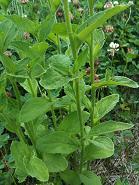
|
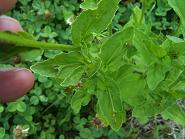
|
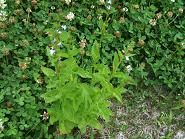
|

|

|
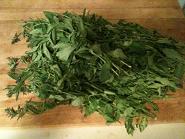
|
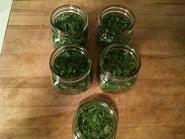
|

|

 I profiled
Eastern Daisy Fleabane at the start of June and I wanted to profile Prairie Fleabane,
but always had difficulty telling them apart. The flowers look very similar. One of the
main differences is that Eastern Daisy Fleabane will often grow up to 5 feet tall while
Prairie Fleabane tends to grow up to 2 to 2-1/2 feet tall. In addition, the leaves of
Prairie Fleabane are sparse on the stem and they are much thinner -- usually less than
1 inch wide. The stems hairs for Prairie Fleabane are appressed and therefore much less
noticable than the hairs for Eastern Daisy Fleabane. The lower (basal) leaves of the
Prairie Fleabane are more spatula-shaped. The quickest way to tell the difference is
the smaller height, thinner and sparser leaves and appressed stem hairs.
I profiled
Eastern Daisy Fleabane at the start of June and I wanted to profile Prairie Fleabane,
but always had difficulty telling them apart. The flowers look very similar. One of the
main differences is that Eastern Daisy Fleabane will often grow up to 5 feet tall while
Prairie Fleabane tends to grow up to 2 to 2-1/2 feet tall. In addition, the leaves of
Prairie Fleabane are sparse on the stem and they are much thinner -- usually less than
1 inch wide. The stems hairs for Prairie Fleabane are appressed and therefore much less
noticable than the hairs for Eastern Daisy Fleabane. The lower (basal) leaves of the
Prairie Fleabane are more spatula-shaped. The quickest way to tell the difference is
the smaller height, thinner and sparser leaves and appressed stem hairs.

|
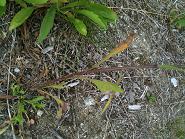
|

|
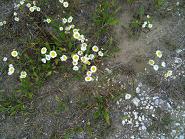
|
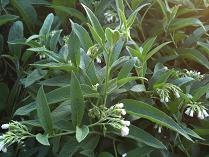
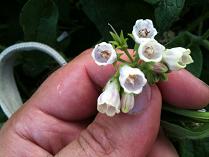
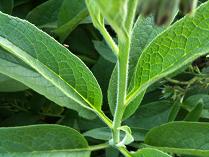


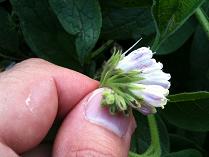

|

|

|
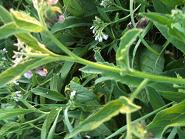
|
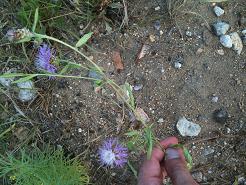
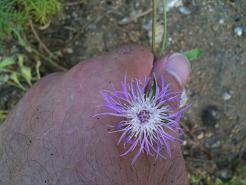
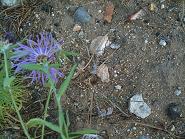
|
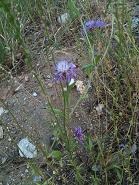
|

|

|
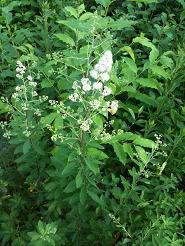

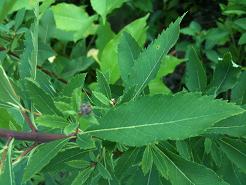

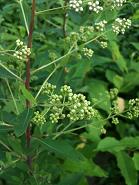
|
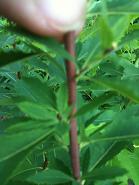
|
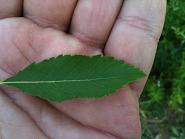
|

|

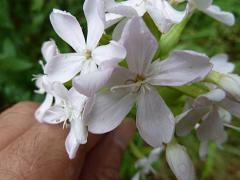

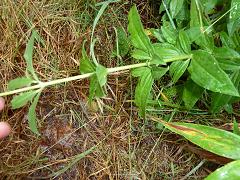
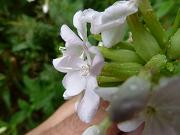
|

|

|

|

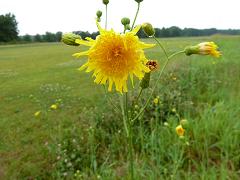

|

|

|

|
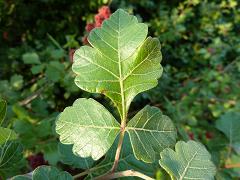

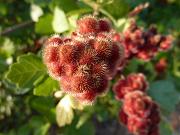
|

|

|
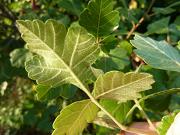
|
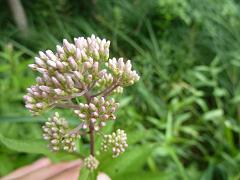
 I‘ve been spotting a lot of Spotted Joe-Pye Weed lately. It grows near
moist/wet areas. Spotted Joe-Pye Weed has redish-pink flowers that make the top
of the plant look
fuzzy when they open up. Each flowerhead has 10-16 flowers. The leaves
grow in whorls of 4-5. The leaves are sharply toothed and the leaf veins are
pinnately divided. The stem is purple or spotted purple with hairs above.
I‘ve been spotting a lot of Spotted Joe-Pye Weed lately. It grows near
moist/wet areas. Spotted Joe-Pye Weed has redish-pink flowers that make the top
of the plant look
fuzzy when they open up. Each flowerhead has 10-16 flowers. The leaves
grow in whorls of 4-5. The leaves are sharply toothed and the leaf veins are
pinnately divided. The stem is purple or spotted purple with hairs above.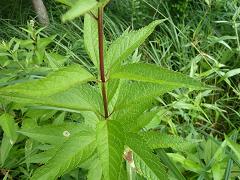
 The leaves and flowers of the Joe-Pye Weeds can be used in tea or tincture to treat
fevers (similar to the way Boneset is used). In addition, the roots can be used in a
decoction to treat and dissolve kidney stones. Sweet Joe-Pye Weed is also known
as Gravel Root and can be found in many herbal formula to treat kidney problems.
The Joe-Pye weeds are used by people with arthritic conditions or joint and ligament
problems. It can break up calcifications in the body and make the joints more supple.
The leaves and flowers of the Joe-Pye Weeds can be used in tea or tincture to treat
fevers (similar to the way Boneset is used). In addition, the roots can be used in a
decoction to treat and dissolve kidney stones. Sweet Joe-Pye Weed is also known
as Gravel Root and can be found in many herbal formula to treat kidney problems.
The Joe-Pye weeds are used by people with arthritic conditions or joint and ligament
problems. It can break up calcifications in the body and make the joints more supple.

|
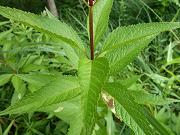
|
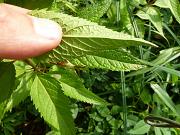
|

|
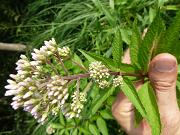
|
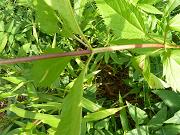
|
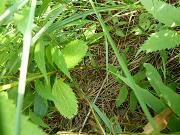
|

|

|

|

|
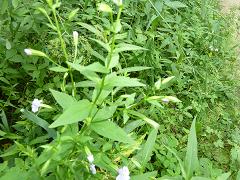
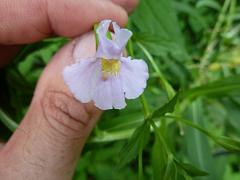 Was monkeying around on the trail and found my first Monkeyflower
(Mimulus) opposite from a Broadleaf Cattail and Pickerel Weed marsh.
As can be seen, the Allegheny Monkeyflower is purple and yellow and some say
looks like a money's face. The lower part of the flower has three lobes and
the upper part has two lobes. The leaves are opposite and tend to clasp the
square stem (no petioles -- sessile).
Was monkeying around on the trail and found my first Monkeyflower
(Mimulus) opposite from a Broadleaf Cattail and Pickerel Weed marsh.
As can be seen, the Allegheny Monkeyflower is purple and yellow and some say
looks like a money's face. The lower part of the flower has three lobes and
the upper part has two lobes. The leaves are opposite and tend to clasp the
square stem (no petioles -- sessile).
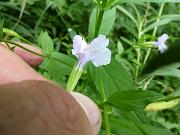
|
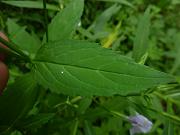
|
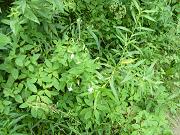
|

|

|
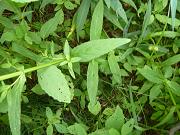
|
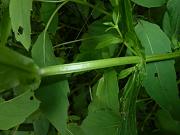
|
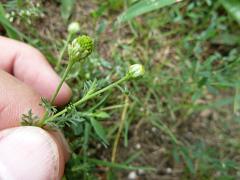
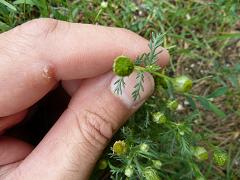 I didn‘t think that I‘d ever find Pineapple Weed this Summer. I thought it was
a much bigger plant, but it is a tiny weed that almost gets lost amongst the grass.
You can just barely see the little green-yellow disks if you stop long enough to
smell the Pineapple. It does have a Pineapple-like smell if you crush the flower heads
between your fingers.
I didn‘t think that I‘d ever find Pineapple Weed this Summer. I thought it was
a much bigger plant, but it is a tiny weed that almost gets lost amongst the grass.
You can just barely see the little green-yellow disks if you stop long enough to
smell the Pineapple. It does have a Pineapple-like smell if you crush the flower heads
between your fingers.
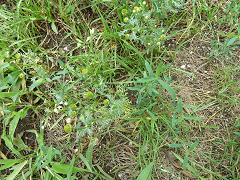 Pineapple Weed is a 2-18 inch tall plant with alternate leaves that are deeped dissected.
The green leaves with a bit of a silver tinge remind me a bit of silver
cinquefoil leaves. Each Pineapple Weed plant can have several to many disk/cone-shaped
flower heads at the ends of the branches. The flower is green and eventually turns yellow
as it matures. Crush the flower to get the pineapple odor.
Pineapple Weed is a 2-18 inch tall plant with alternate leaves that are deeped dissected.
The green leaves with a bit of a silver tinge remind me a bit of silver
cinquefoil leaves. Each Pineapple Weed plant can have several to many disk/cone-shaped
flower heads at the ends of the branches. The flower is green and eventually turns yellow
as it matures. Crush the flower to get the pineapple odor.
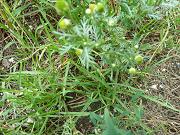
|
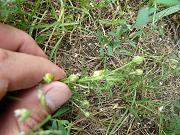
|

|
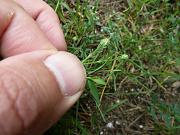
|

|

|
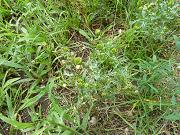
|

|
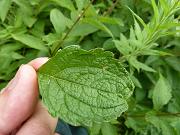
|

|

|
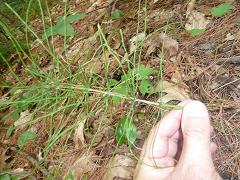
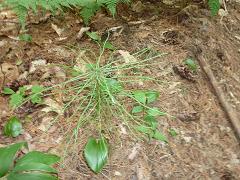 Oops! I am not supposed to ingest Horsetail in a tincture because it has
thiaminase (an enzyme that destroys thiamin, Vitamin B1) and that enzyme
can be destroyed by heat. I should have prepared it as a decoction.
Oops! I am not supposed to ingest Horsetail in a tincture because it has
thiaminase (an enzyme that destroys thiamin, Vitamin B1) and that enzyme
can be destroyed by heat. I should have prepared it as a decoction.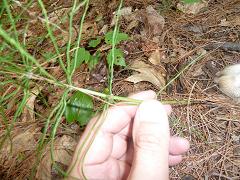
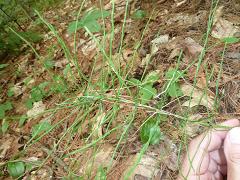
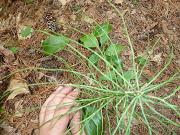
|

|
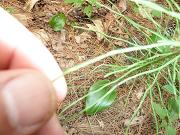
|
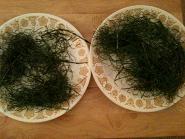
|

|
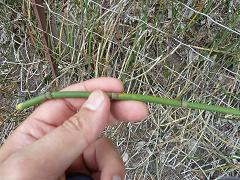
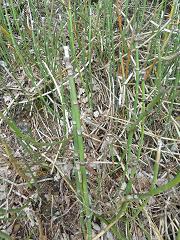
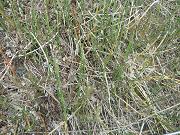
|
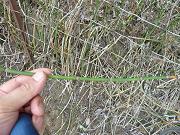
|
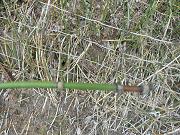
|

|
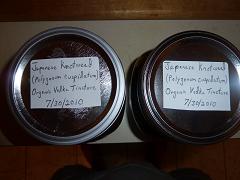
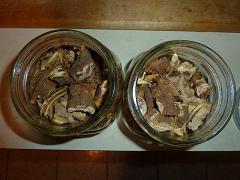 Made a Japanese Knotweed rhizome tincture today. By the way, a rhizome is a
“creeping underground stem.” The rhizome is incredibly hard. So hard
in fact that I had to go out and buy a hatchet to start to cut up the rhizome. After
making the pieces a bit smaller with the hatchet, I put them in two canvas bags and
took them out to a parking lot and tried to crush them with a hammer. Some of the
pieces were crushed but some tore holes the bag. The pieces on top of the tincture bottles
are only partially crushed There are significant crushed bits on the bottom of the
bottles.
Made a Japanese Knotweed rhizome tincture today. By the way, a rhizome is a
“creeping underground stem.” The rhizome is incredibly hard. So hard
in fact that I had to go out and buy a hatchet to start to cut up the rhizome. After
making the pieces a bit smaller with the hatchet, I put them in two canvas bags and
took them out to a parking lot and tried to crush them with a hammer. Some of the
pieces were crushed but some tore holes the bag. The pieces on top of the tincture bottles
are only partially crushed There are significant crushed bits on the bottom of the
bottles.|
Sessile Bellwort (Leaves droop) |
Solomon‘s Seal (Berries below) |
Sessile Bellwort (Triangular seed pod) |
Sessile Bellwort (Branching stem) |
|---|---|---|---|

|
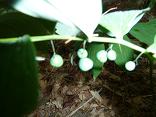
|

|
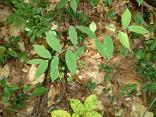
|